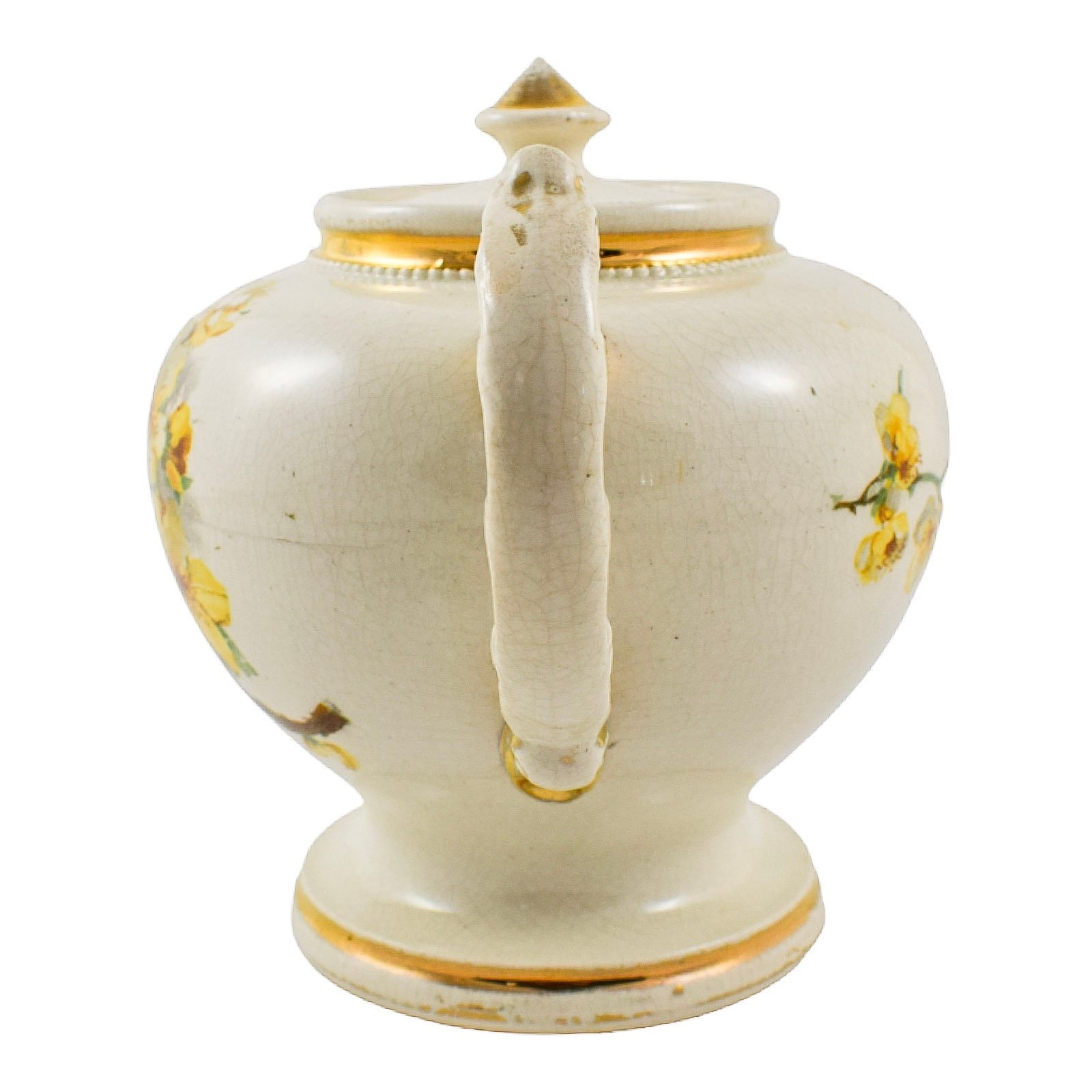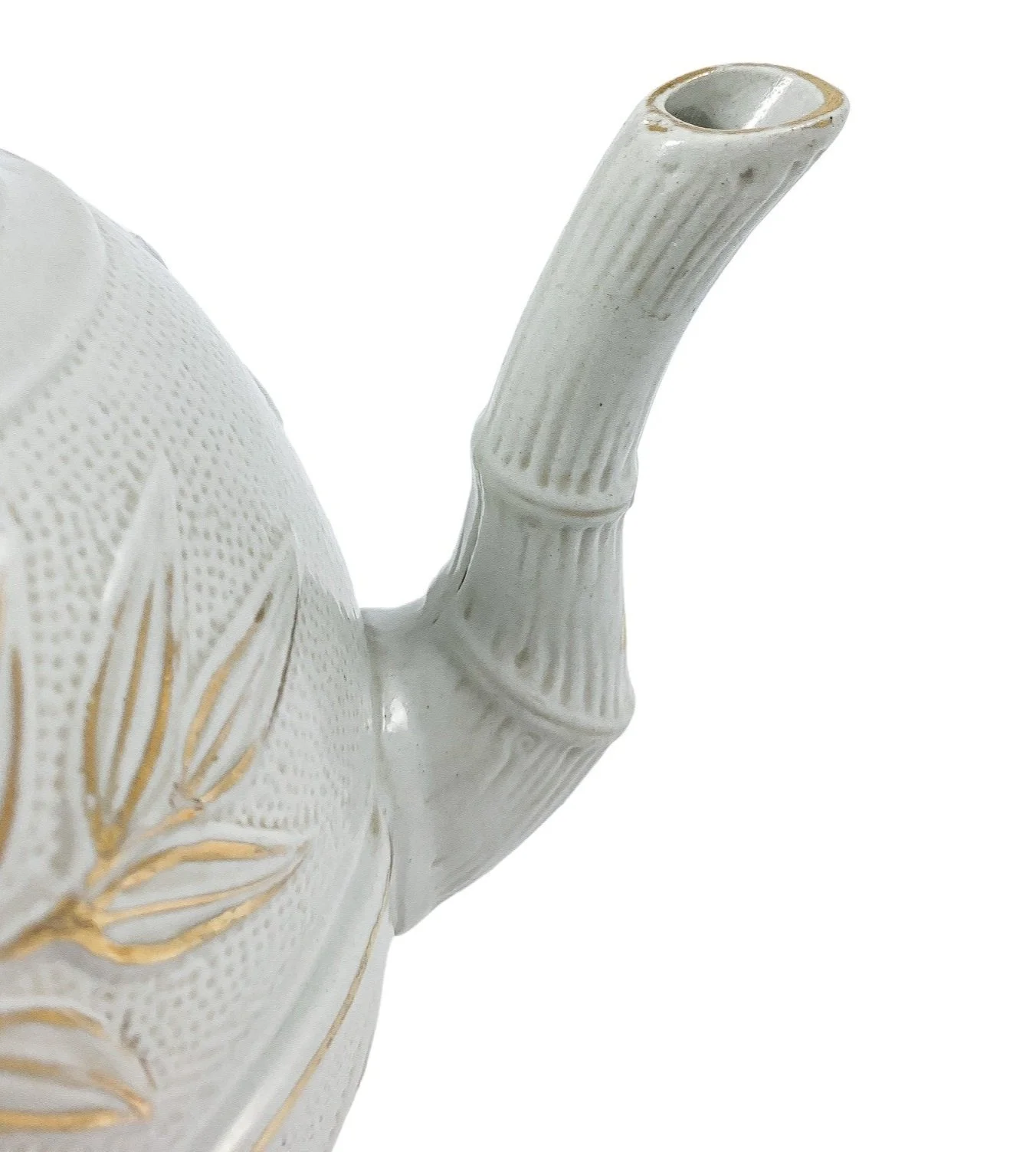 Image 1 of 14
Image 1 of 14

 Image 2 of 14
Image 2 of 14

 Image 3 of 14
Image 3 of 14

 Image 4 of 14
Image 4 of 14

 Image 5 of 14
Image 5 of 14

 Image 6 of 14
Image 6 of 14

 Image 7 of 14
Image 7 of 14

 Image 8 of 14
Image 8 of 14

 Image 9 of 14
Image 9 of 14

 Image 10 of 14
Image 10 of 14

 Image 11 of 14
Image 11 of 14

 Image 12 of 14
Image 12 of 14

 Image 13 of 14
Image 13 of 14

 Image 14 of 14
Image 14 of 14















Rare Carl Tielsch & Co hard-paste porcelain coffee pot, Rococo Revival floral decoration with gilding, circa 1850s
This rare porcelain coffee pot, produced by Carl Tielsch & Co around 1850s, is an excellent example of mid-19th-century Rococo Revival design. Crafted in hard-paste porcelain, it is finished with a pure white glaze accented by delicate pink washes and detailed with profuse hand-applied gilding. The ornate Rococo-inspired decoration includes deeply moulded floral and foliate motifs around the spout, handle, lid, and foot, all highlighted with fine gilding.
The body adopts a distinctive eight-lobed baluster form, a popular silhouette during the period, providing multiple surfaces for decorative emphasis. The restrained use of pink and the rich gilding echo contemporary interior trends of the time, favouring elegant but opulent colour schemes.
The Rococo Revival style, fashionable across Europe during the second quarter of the 19th century, took inspiration from 18th-century French porcelain, particularly the works of Sèvres and Meissen. Pieces like this were often created both for practical use and for display, reflecting the taste and social status of their owners.
Weight: 1074 g
Height: 26 cm / 10.24″
Width (handle to spout): 21 cm / 8.27″
Depth: 16 cm / 6.30″
Excellent antique condition. Minor rubbing to the gilding consistent with age. No cracks, chips, or repairs. The blue eagle and "C.T." mark are clearly visible on the base. The body displays several minor firing-related pinholes formed during manufacture; these small imperfections are stable, confined to the surface, and do not affect use or overall presentation.
This rare porcelain coffee pot, produced by Carl Tielsch & Co around 1850s, is an excellent example of mid-19th-century Rococo Revival design. Crafted in hard-paste porcelain, it is finished with a pure white glaze accented by delicate pink washes and detailed with profuse hand-applied gilding. The ornate Rococo-inspired decoration includes deeply moulded floral and foliate motifs around the spout, handle, lid, and foot, all highlighted with fine gilding.
The body adopts a distinctive eight-lobed baluster form, a popular silhouette during the period, providing multiple surfaces for decorative emphasis. The restrained use of pink and the rich gilding echo contemporary interior trends of the time, favouring elegant but opulent colour schemes.
The Rococo Revival style, fashionable across Europe during the second quarter of the 19th century, took inspiration from 18th-century French porcelain, particularly the works of Sèvres and Meissen. Pieces like this were often created both for practical use and for display, reflecting the taste and social status of their owners.
Weight: 1074 g
Height: 26 cm / 10.24″
Width (handle to spout): 21 cm / 8.27″
Depth: 16 cm / 6.30″
Excellent antique condition. Minor rubbing to the gilding consistent with age. No cracks, chips, or repairs. The blue eagle and "C.T." mark are clearly visible on the base. The body displays several minor firing-related pinholes formed during manufacture; these small imperfections are stable, confined to the surface, and do not affect use or overall presentation.
This rare porcelain coffee pot, produced by Carl Tielsch & Co around 1850s, is an excellent example of mid-19th-century Rococo Revival design. Crafted in hard-paste porcelain, it is finished with a pure white glaze accented by delicate pink washes and detailed with profuse hand-applied gilding. The ornate Rococo-inspired decoration includes deeply moulded floral and foliate motifs around the spout, handle, lid, and foot, all highlighted with fine gilding.
The body adopts a distinctive eight-lobed baluster form, a popular silhouette during the period, providing multiple surfaces for decorative emphasis. The restrained use of pink and the rich gilding echo contemporary interior trends of the time, favouring elegant but opulent colour schemes.
The Rococo Revival style, fashionable across Europe during the second quarter of the 19th century, took inspiration from 18th-century French porcelain, particularly the works of Sèvres and Meissen. Pieces like this were often created both for practical use and for display, reflecting the taste and social status of their owners.
Weight: 1074 g
Height: 26 cm / 10.24″
Width (handle to spout): 21 cm / 8.27″
Depth: 16 cm / 6.30″
Excellent antique condition. Minor rubbing to the gilding consistent with age. No cracks, chips, or repairs. The blue eagle and "C.T." mark are clearly visible on the base. The body displays several minor firing-related pinholes formed during manufacture; these small imperfections are stable, confined to the surface, and do not affect use or overall presentation.
Founded in 1763 under the patronage of Frederick the Great, the Königliche Porzellan-Manufaktur (KPM) quickly became one of Europe’s leading porcelain manufacturers. Known for technical excellence and artistic innovation, KPM adapted its designs to suit changing tastes, including the revival styles popular in the mid-19th century. Between 1844 and 1847, the factory used a distinctive underglaze blue sceptre mark, helping to date pieces from this productive era.





















































